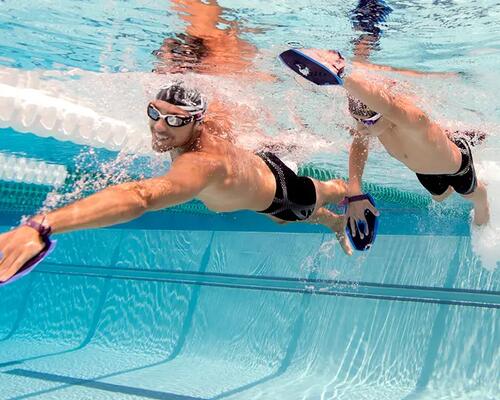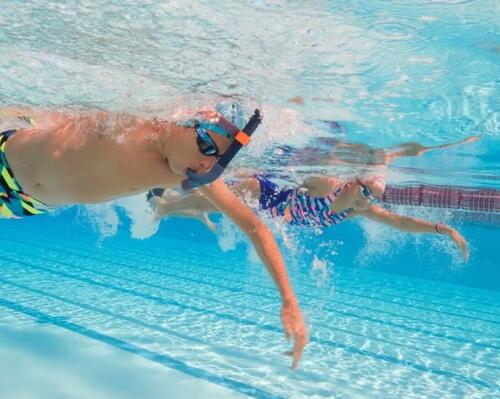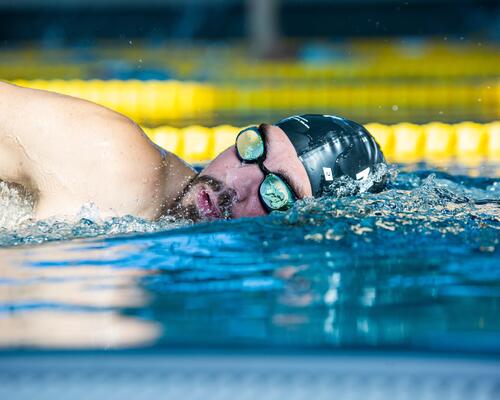Last pro-tip before you go
To maximise effectiveness during your training, Gilles, our training equipment product manager, recommends sweeping kick strokes during your swimming session. To achieve this, it is best to start movement from your hips rather than the knee.
To intensify your leg workout, don't hesitate to make use of a kickboard. If at any point you do feel a slight irritation, it will no doubt be due to the foot pocket's rubber. Consider using a latex sock to feel more at ease.
On wearing fins, Giles says, "First of all, warmup without fins by doing a few lengths up and down the pool! Otherwise you'll risk "overheating" your muscles too quickly. To start training, I'd recommend using "short" fins because they're more lightweight and flexible."
For women who are seeking to tone their legs, Nabaiji's short Silifins fins are the perfect accessory! There is much less thrust as compared to longer blade fins. They enable swimmers to place emphasis on speed and frequency rather than power. This form of exercise is centered more on aerobic training rather than muscle strengthening.






